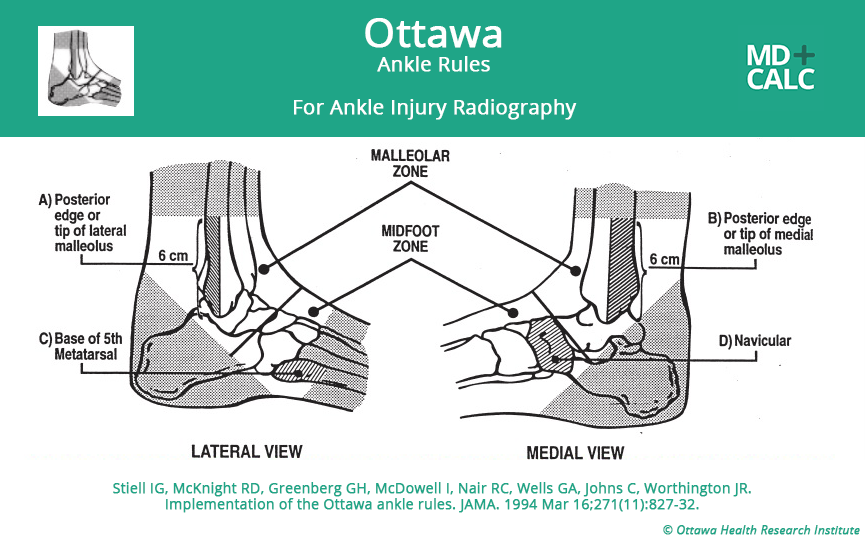Page Contents
OVERVIEW
The purpose of this page is to take the notable 1992 Ottawa study titled “A study to develop clinical decision rules for the use of radiography in acute ankle injuries” (Stiell et al. 1992, Annals Of Emergency Medicine) and distill down its major takeaways for clinical practice.
WHAT IS THE POINT OF THIS STUDY?
At the time that this study was conducted, providers were ordering ankle/foot X-rays more frequently then necessary (i.e. the rate of ordering ankle imaging in patients who did not need it was too high). This study aimed to create clear guidelines for providers to justify which patients need ankle/foot imaging and which do not.
WHAT ARE THE MAJOR TAKEAWAYS?
Overall the Ottawa 1992 Study resulted in the development of the Ottawa Ankle Rule: this ankle rule is now used as the standard of care when deciding which patients with ankle injuries will need imaging. It has been updated/validated since the original 1992 study, and the main points of these guidelines are listed below (they can also be found here).

An ankle X-ray series is recommended IF there is any pain in the malleolar zone AND one of the following findings is present.
- Bone tenderness at point A
- Bone tenderness at point B
- Inability to bear weight on the hurt foot
A foot X-ray series is recommended IF there is any pain in the malleolar zone AND one of the following findings is present.
- Bone tenderness at point C
- Bone tenderness at point D
- Inability to bear weight on the hurt foot
WHAT CAN WE CONCLUDE?
Usage of this criteria will help decide clinically if a patient should or should not receive imaging of the foot/ankle following ankle injury
Page Updated: 10.17.2016